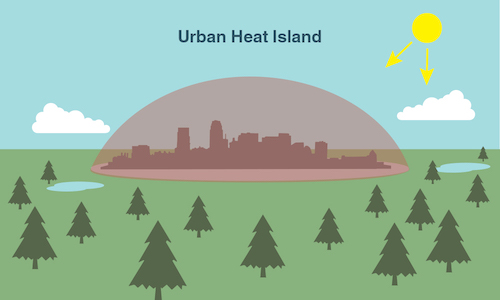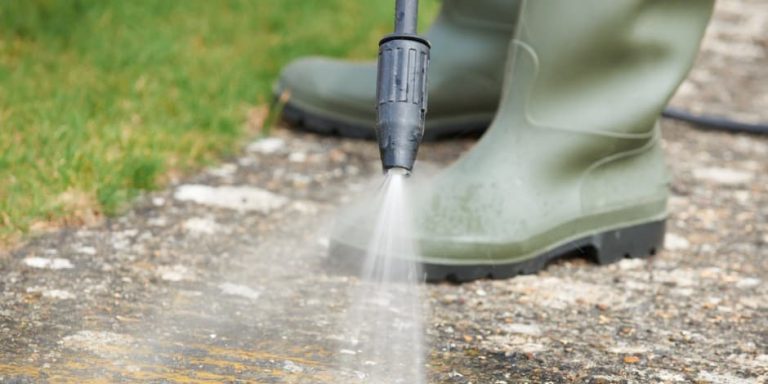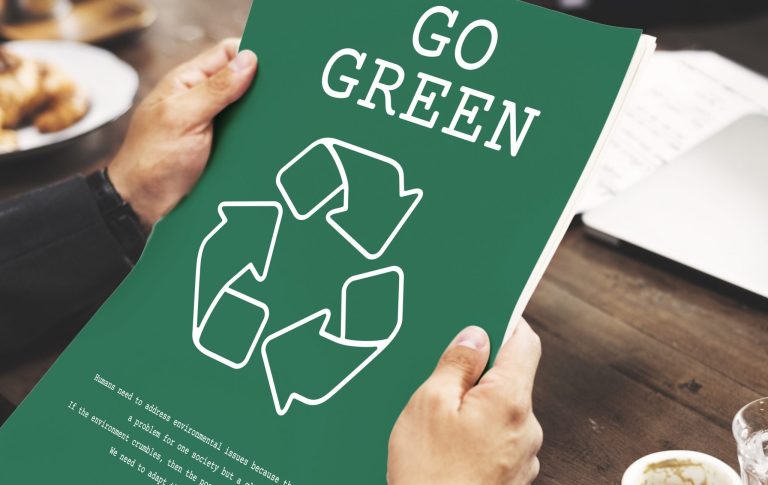
The environmental consequences of power washing are often discussed in terms of water usage and chemical runoff, but there’s another, less obvious angle worth exploring: its impact on the Urban Heat Island (UHI) effect. 🌇💧
Urban Heat Islands are areas—typically cities—where temperatures are significantly higher than surrounding rural zones due to dense infrastructure, lack of vegetation, and human activity. But how does power washing fit into this picture? Let’s take a deeper look at how regular cleaning of paved and hardscaped surfaces may unintentionally contribute to rising urban temperatures—and what can be done to mitigate that impact. 🌡️🏙️
🔥 What Is the Urban Heat Island Effect?
The Urban Heat Island effect occurs when cities absorb and retain more heat than surrounding natural landscapes. The main contributors include:
- Asphalt, concrete, and brick surfaces that retain heat during the day and slowly release it at night
- Dark-colored rooftops and pavements with low albedo (reflectivity)
- Lack of vegetation and shade
- Human activity, such as traffic, energy use, and yes—cleaning operations like power washing
This effect can raise average urban temperatures by 1.8°F to 5.4°F, and in some cases, as much as 10°F or more compared to surrounding rural areas. 🔥
💦 How Power Washing Contributes to UHI
At first glance, power washing seems like a cooling activity—it uses water, after all. But when looked at holistically, it actually plays a role in amplifying the UHI effect in several indirect ways:
1. Strips Surfaces of Cooling Organic Matter
When power washing removes layers of moss, lichen, or accumulated organic grime from sidewalks and driveways, it also removes natural cooling agents that help regulate temperature.
- Moss and lichen retain moisture and reflect light
- Their removal exposes bare concrete, which absorbs more heat ☀️
2. Keeps Pavement Exposed and Bare
Frequent cleaning keeps urban surfaces clear of dust, dirt, and even thin vegetation, which otherwise might reduce surface temperature by providing minor shading and evaporative cooling.
The cleaner and drier the surface, the more solar radiation it absorbs. Over time, this increases ground-level temperatures in high-traffic areas.
3. Water Use and Evaporation
While water use itself doesn’t heat the environment, the evaporation process contributes to humidity and short-term localized warming, especially in dense urban cores where airflow is limited.
If wastewater is not captured or redirected properly, it can also pool and stagnate, increasing the thermal mass of certain areas.
4. Energy Use and Emissions
Gas-powered power washers and trucks used for commercial cleaning emit:
- Carbon dioxide (CO₂)
- Nitrogen oxides (NOₓ)
- Particulate matter (PM)
These emissions contribute to smog formation and the trapping of heat in city atmospheres. Plus, the carbon footprint of routine cleaning operations adds to urban warming over time. 🌫️🚛
🏙️ Real-World Examples
In a 2020 urban planning report from Los Angeles, it was found that frequent maintenance of plazas and walkways using pressure washing kept surfaces visually clean but raised surface temps by 3°F compared to areas that allowed mild moss or grime buildup.
Another study in Houston found that concrete plazas routinely cleaned during summer months had lower albedo and higher night-time surface temps than untreated areas, exacerbating local heat retention.
🧊 Possible Benefits? A Double-Edged Sword
In some instances, power washing may temporarily cool surfaces—especially if:
- It’s done early in the morning
- It uses cold water
- It is followed by natural evaporation
But this cooling is short-lived and does not address the underlying issue of heat absorption by dark, exposed surfaces.
✅ Eco-Conscious Solutions
Fortunately, there are ways to keep cities clean without worsening the UHI effect. Here’s how to make power washing part of the solution—not the problem:
🌱 1. Use Light-Colored Sealants
After washing, apply reflective or light-colored sealants to driveways, roofs, or patios. These increase albedo and reduce heat absorption.
🚿 2. Clean Strategically, Not Excessively
Limit power washing frequency to when absolutely necessary. Over-washing not only wastes water but exposes heat-retaining surfaces more frequently.
🌀 3. Capture and Reuse Water
Use graywater systems or closed-loop power washing setups to prevent water pooling and runoff from contributing to ambient humidity.
🌳 4. Add Shade and Vegetation
Encourage clients or municipalities to integrate shade trees, green roofs, or plant walls around power-washed areas. These features help offset UHI effects and reduce surface temps by up to 10°F. 🌿🌳
⚡ 5. Switch to Electric Equipment
Reduce emissions by using electric or battery-powered washers instead of gas-powered ones. Bonus: they’re quieter, too!
📊 At a Glance: UHI Impact Factors of Power Washing
| Factor | UHI Impact | Mitigation Strategy |
|---|---|---|
| Surface exposure post-cleaning | 🔺 Increases heat | Use sealants or allow minimal moss buildup |
| Water evaporation | ⚠️ Minor effect | Capture runoff or wash during cooler hours |
| Fossil fuel equipment | 🔺 Adds emissions | Switch to electric alternatives |
| Reflectivity (albedo) loss | 🔺 More absorption | Apply reflective coatings |
🌍 Final Thoughts
Power washing is essential for public health, aesthetics, and safety. But when done without foresight, it may unintentionally contribute to the Urban Heat Island effect—a growing challenge for sustainable city living.
By making smarter decisions around when, where, and how we clean urban surfaces, we can preserve the benefits of power washing without making our cities even hotter. Clean doesn’t have to come at the cost of climate health. 🌞🚿🌱
Browse Amazon Here For Top Rated Power Washers And Accessories






